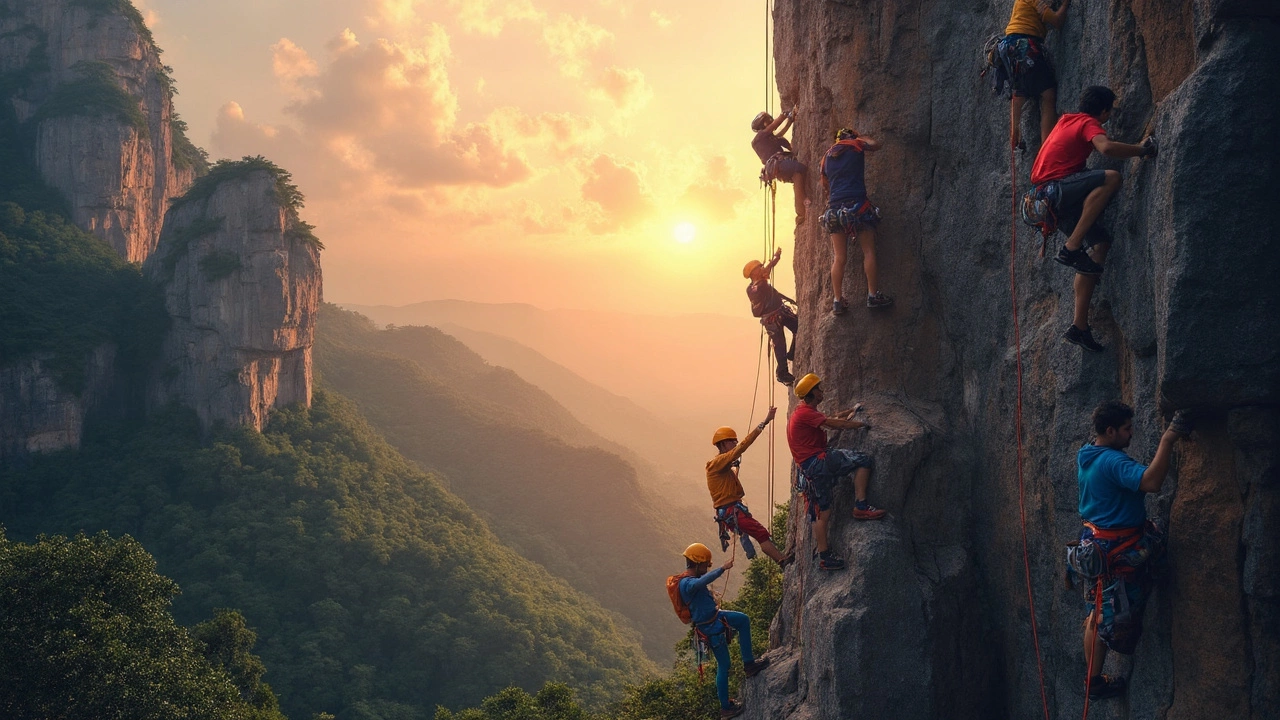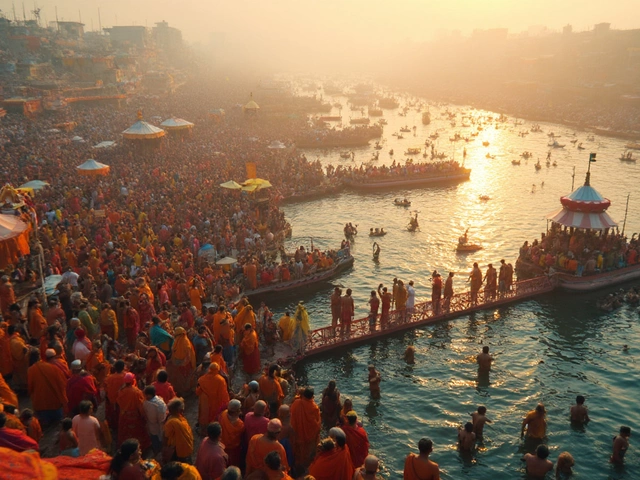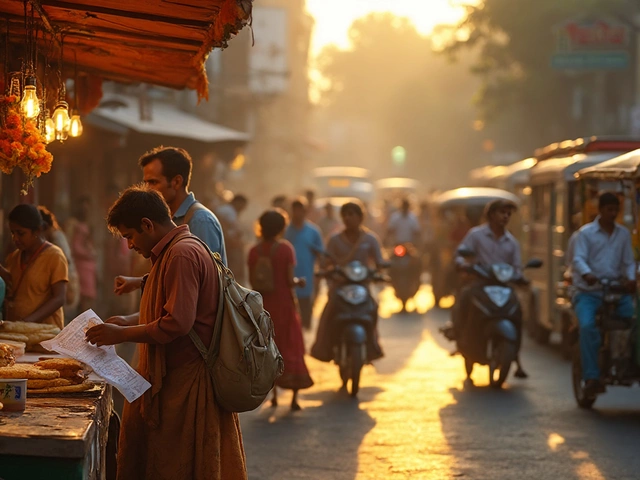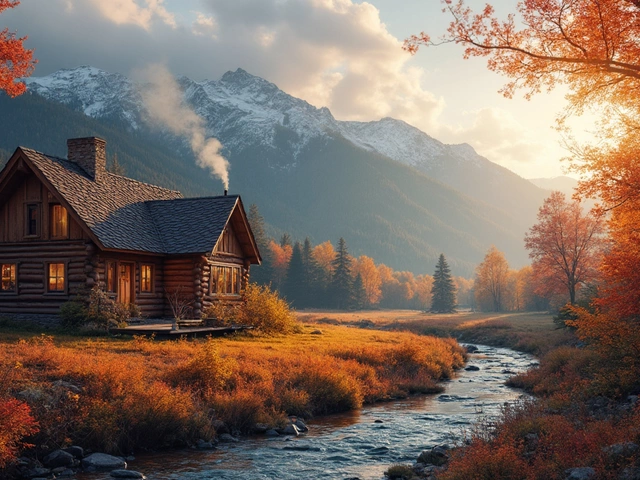India's diverse landscapes offer some amazing spots for mountaineering. Whether you're scaling snow-capped peaks or challenging your grip on sheer rock faces, there's so much to explore! But what's the deal with the different types of mountaineering?
Let's kick things off with rock climbing. It's all about technique, grip strength, and, let's not forget, mental focus. Places like Hampi and Badami in Karnataka are meccas for rock climbers. They're not just about the climb; the views from the top are downright epic.
Next, there's snow and ice climbing—which is exactly what it sounds like. Picture this: you're scaling icy ridges and glaciers in the Himalayas. It’s not just physical endurance but also mastering gear like crampons and ice picks. If you're up for the challenge, destinations like Manali and Ladakh should be on your list.
Rock Climbing
Rock climbing in India has truly taken off, with enthusiasts flocking to stunning spots that offer both challenge and beauty. If you’re into the thrills of gripping bare rocks and testing your strength and wit, then you're in for a treat.
The Basics of Rock Climbing
First things first, you need some solid fundamental skills. Balance, footwork, and spatial awareness are key to mastering this type of mountaineering. Add to that some gear knowledge—you've got to be familiar with climbing shoes, harnesses, and ropes.
Hotspots for Rock Climbing in India
Hampi, Karnataka, is a world-renowned climbing destination with its unique granite boulders. It's not just a climbers' paradise but also a UNESCO World Heritage Site! Badami, also in Karnataka, offers routes for all skill levels, so whether you're a newbie or a seasoned pro, you’ll find your match.
- Hampi: Known for both its scenic beauty and historical significance. Try to visit during the cooler months from November to February for an ideal climbing experience.
- Badami: Offers over 150 routes and is perfect for trying out different climbing styles.
Why Rock Climb in India?
Apart from its diversity in climbing terrains, India provides a cost-effective adventure compared to Western countries. Plus, you'll be climbing amidst landscapes steeped in culture and history.
Safety Tips
- Always inspect your gear before starting the climb.
- Climb with a buddy and maintain clear communication.
- Check weather conditions—especially the rock surfaces post-rain for stability.
In essence, rock climbing in India isn't just a sport; it's an adventure set against incredible backdrops. Whether you're scaling the ancient boulders of Hampi or exploring the gritstone at Sethan, you'll not only gain physical strength but also a unique perspective on the world around you.
Snow and Ice Climbing
Imagine standing at the base of a gleaming ice wall, the gusts of wind carrying a chill straight from the Himalayas. This is the ultimate arena for snow and ice climbing in India. It's an adrenaline rush like no other, where climbers need a mix of technical skills and physical endurance.
Ice climbing in India often happens in the higher reaches of the Himalayas. Ladakh and the peaks near Manali are particularly popular, drawing adventurers from around the globe. But it's not just about guts; it’s literally about navigating ice and snow with the help of specialized gear.
Essential Gear
When it comes to gear, here’s what you can't do without:
- Crampons: These spikes attach to your boots and help you gain traction on icy surfaces.
- Ice Axes: Used to anchor yourself on steep ice walls.
- Proper cold-weather clothing is crucial because staying warm means staying safe.
Training and Preparation
You can't just wing it when it comes to ice climbing. Training with experienced guides is essential. Many training schools in areas like Manali offer courses that teach basic techniques, safety measures, and how to use gear effectively.
Here's a handy tip: Start with smaller peaks to build confidence before tackling the giants. Also, always check weather conditions beforehand—in the mountains, they can change rapidly.
Best Time to Visit
For snow and ice climbing in India, the season typically runs from late November to early March. These months offer the best conditions for icy surfaces—perfect for a challenging yet rewarding climb.
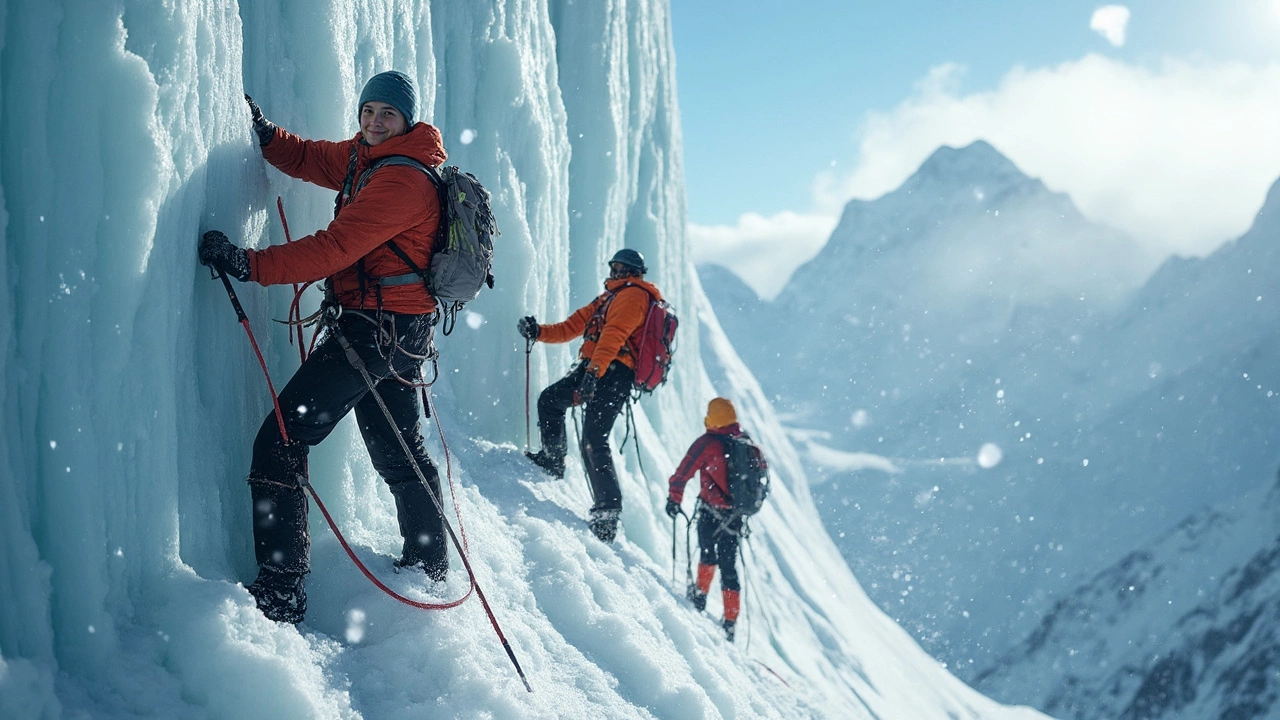
Mixed Climbing
Mixed climbing is a real test of your skills and adaptability. Imagine combining rock climbing with snow and ice climbing—that's mixed climbing for you! It involves transitioning between rock, snow, and ice surfaces as you climb, requiring you to be ready for whatever the mountain throws your way.
One of the top spots for mixed climbing in India is the Zanskar Valley in Ladakh. It's where the rugged granite cliffs meet snowy icefalls, creating an adventure playground. But don't get fooled by its beauty; mixed climbing is complex and demands precision and a good understanding of technique and gear.
Essential Gear
For mixed climbing, having the right gear is a game-changer. Besides your regular climbing shoes and harness, you'll need:
- Crampons: These attach to your boots to give you much-needed grip on ice and snow surfaces.
- Ice Axes: Vital for maintaining balance and grip on icy patches, they’re your best friend in tough spots.
- Mixed Climbing Tools: These specialized tools are designed to switch between rock and ice effectively.
Remember, safety is key. Always double-check your gear before embarking on a climb. Each piece of equipment plays a crucial role in not just your success, but also your survival.
Training and Techniques
To tackle mixed climbing, you need a solid foundation in both rock and ice climbing techniques. Consider taking a course or hiring a guide, especially if you're new. You'll learn techniques to swap between surfaces efficiently and handle the unique challenges of mixed terrains. It might be tough, but the sense of accomplishment at the top makes it all worthwhile!
A Look at the Challenges
Mixed climbing isn't just about physical strength; it challenges your mental grit too. Unpredictable weather and changing conditions require climbers to make quick decisions. This is why a lot of experience and focus can really give an edge in conquering difficult routes.
Essential Tips for Indian Mountaineering
If you're thinking about diving into the world of mountaineering in India, here's some solid info to keep you safe and prepared.
Get the Right Gear
The mountains out there can be relentless. So, first things first, ensure you've got reliable gear: weather-resistant clothing, sturdy boots, and safety equipment like harnesses and helmets. And if you're heading for ice climbing, don't forget those crampons and picks.
Understand the Terrain
India's mountains can be as diverse as its culture. Whether you're exploring the frozen landscapes in the Himalayas or trekking up the Western Ghats, each area has its own surprises. Take the time to research your destination’s terrain and weather conditions before you set off.
Physical Prep
Mountaineering isn't a walk in the park. Cardio, stamina, and strength training should be part of your routine several months before your trip. Even yoga can help with flexibility and breathing.
Find a Good Guide
Local expertise can make or break your adventure. Hiring a seasoned guide familiar with Indian trekking places can keep you on the right track and provide invaluable insights.
Leave No Trace
Always respect nature. Keep the trails clean, avoid damaging local flora, and ensure whatever you bring in, you take out.
Permits and Documentation
Some areas, especially in border regions or sensitive ecological zones, require permits. Make sure your paperwork is sorted before you hit the road. This table shows some popular mountaineering destinations that require permits:
| Destination | Permit Required |
|---|---|
| Ladakh | Inner Line Permit |
| Sikkim | Special Area Permit |
Whether you're a seasoned pro or a newbie, Indian mountaineering serves up a unique blend of culture and challenges that you'll remember long after the climb. So gear up, stay safe, and enjoy the incredible views!
